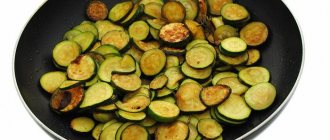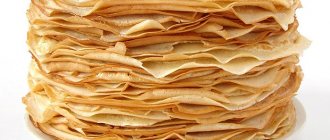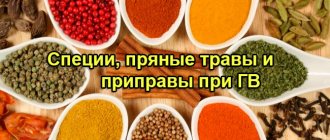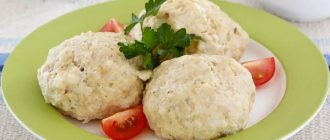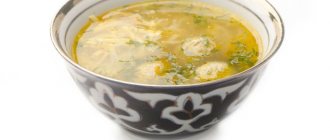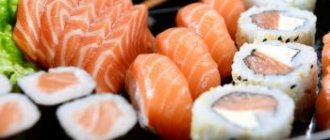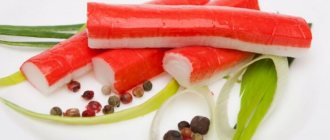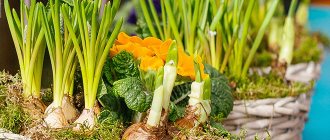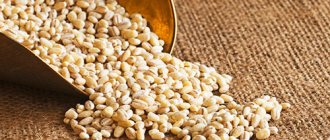Fish and fish products are of great importance in the diet of lactating women, because they contain essential substances, the benefits of which cannot be overestimated.
Marine fish, such as cod, is especially useful for breastfeeding, the unique composition of which provides the body of the mother and her child with many vitamins and minerals. Is this product okay for a nursing mother, and how to use it correctly during lactation so as not to harm her health, this article will tell you.
Beneficial features
Sea cod fish has white meat, which has a layered structure and is suitable for preparing a variety of dishes. This type of fish is rich in nutrients and is a source of complete protein.
Regular consumption of cod:
- has a beneficial effect on brain function due to its high iodine content, promotes good mental development in breastfed children;
- helps improve blood circulation, normalize blood clotting;
- thanks to vitamin PP, it normalizes the functioning of the gastrointestinal tract (this vitamin does not accumulate in the body and must be constantly supplied with food);
- helps strengthen nails and hair, improves skin tone due to large amounts of sulfur;
- provides the body with omega-3 fatty acids that can destroy damaged cells that provoke the development of cancer;
- helps to fully supply the brain with oxygen.
- kidney problems;
- urolithiasis;
- cholelithiasis;
- excess vitamin D;
- hypotension.
Cod dishes during lactation
Saltwater fish can carry parasites that are harmful to humans, so buy your product from a reputable supplier. Parasites are killed by deep freezing and good heat treatment. The safest product is deep-frozen, provided that the temperature conditions during transportation and storage are observed.
To prevent cod dishes from causing digestive problems, do not overuse this product. It is also worth considering that the combination of this sea fish and cheese is poorly absorbed by the body.
In the first months of a child’s life, nursing mothers should gradually introduce boiled or steamed cod into their menu. When the baby reaches six months of age, it is allowed to bake sea fish in a sleeve or foil. Cooked fish can be added to salads if the baby’s body is already adapted to the other ingredients of the dish.
Cod liver
Separately, it is worth considering such a product as Tesky liver.
It contains:
- vitamins B, C and A;
- trace elements iodine, potassium, zinc, phosphorus, calcium;
- phosphoric acid and other organic acids.
The rich composition of cod liver makes it extremely useful for young mothers who need to overcome postpartum depression, restore strength and health after childbirth, and provide the baby with substances for growth and development. Read about other methods that can overcome postpartum depression here.
Cod liver in the diet:
- with low blood pressure (hypotension);
- with an excess of calcium and vitamin D in the body.
For an infant, an excess of calcium is fraught, in particular, with rapid hardening of the skull bones and premature overgrowth of the fontanel, which can lead to increased intracranial pressure.
What is possible and what is not?
Often, young mothers want to diversify their diet with fish delicacies or special preparation of fish. They ask: can a nursing mother have salted fish?
The answer to this question is also ambiguous; in the first few months of breastfeeding, salted fish is not advisable during breastfeeding.
It may be of low quality, which will lead to poisoning or infection with worms; it may be an allergen, since the product is raw and not thermally processed at all, which reduces allergenicity.
In addition, salted fish leads to increased thirst, which can lead to changes in the taste and composition of milk.
In addition, smoking increases the allergenicity of fish. Therefore, smoked fish is also not recommended during breastfeeding, especially in the first months of feeding.
Other information on the topic
- Diet for nursing mothers: expert opinion
- Smoking while breastfeeding
It's no secret that during pregnancy women's taste preferences often change. The expectant mother may crave salty, sweet and even sour foods. But if during this period a woman can afford it, then after giving birth everything changes, because now you need to monitor not only your health, but also the condition of the baby. For example, the question of what kind of fish is ok for breastfeeding is of great concern to young mothers.
Fish during lactation is valued more than meat: it is easier to digest and contains all the necessary amino acids and minerals. After eating fish dishes, there is no feeling of heaviness in the stomach.
That is why doctors do not prohibit a nursing mother from eating fish during breastfeeding, since it has a number of beneficial properties:
- the presence of vitamin D, which promotes better absorption of calcium in the body of mother and baby;
- Omega-3 acids that have a positive effect on the baby’s nervous system:
- fast and easy digestion process in the gastrointestinal tract;
- the protein contained has a beneficial effect on the kidneys;
- presence of vitamins B, A, C, E.
The only prohibition for consumption is an allergy to fish products. If a young mother has already encountered this before, she should avoid eating such dishes. At the same time, you should also monitor the baby’s reaction: young children quickly react to the composition of their mother’s milk.
Cod liver dishes
Typically, cod liver is sold in canned form. When purchasing, you need to pay attention to the date of manufacture of canned food and its composition - give preference to fresh canned food from a trusted manufacturer. After opening the jar, carefully inspect and smell the contents: an unattractive appearance and smell of rancid fat indicate that the product is unsuitable for consumption.
It is important to know that the value of a canned product made from fresh liver is much higher than from frozen raw materials. The best canned food is made directly on floating bases.
Cod liver cannot be eaten in its pure form; the fat content is too high, which is bad for digestion. You can make a sandwich or add the product to a salad with boiled vegetables or rice.
You can introduce cod liver into your mother’s diet at an early stage – from the baby’s age of two months. Be sure to start with small portions of the dish to track your baby’s body reaction.
Fish is a very healthy and necessary product in the diet of a nursing mother.
Firstly, it is rich in complete protein, and secondly, it is easily absorbed without overloading the digestive tract.
In addition, the product is saturated with a variety of beneficial substances and microelements.
However, it is important to know how to cook fish correctly for a nursing mother, because some types are strong allergens and can cause health problems for the baby.
Optimal varieties of fish for cutlets during GW
Depending on the fish from which fish cutlets are prepared, the composition of beneficial microelements will differ, as well as the calorie content of the finished dish. Different types of fish are allergenic to varying degrees. How to choose the fish that is most beneficial for a nursing mother and her baby?
The diet should include both river and sea fish species. It is advisable to cook cutlets from different varieties in turn so that the body receives different vitamins.
White varieties of fish (cod, pollock, hake, etc.) are very useful It is simply a storehouse of vitamins and minerals.
Red fish is considered more allergenic. This includes salmon, trout, and salmon. It is not advisable to eat large ocean fish while breastfeeding. The amount of mercury in it exceeds the permissible limits.
If there are no contraindications, then almost all types of fish can be used, gradually introducing them into the diet. The main condition is that the fish must be of high quality. When buying fish, you need to pay attention to the expiration dates, and if there is no labeling, to the appearance and smell of the fish.
What kind of fish is ok while breastfeeding and what is not?
When compiling a diet, preference should be given to river fish, for example, pike perch, carp, carp, pike, and crucian carp. These types contain a lot of protein and a minimum of fat; reactions to them from breastfed children are rare.
Marine varieties are also allowed. It is recommended to eat hake, salmon, trout, flounder, cod, halibut, pink salmon or herring. Sea fish provokes allergic reactions in infants more often, so it should be introduced into the diet with caution (start with small portions).
Which varieties are prohibited when breastfeeding:
- tuna. Often high levels of mercury compounds are found in this type of seafood;
- mackerel. She is a strong allergen;
- acne. Dangerous due to mercury and PCBs (polychlorinated biphenyls), which literally destroy the liver;
- catfish, pangasius, tilapia, if they are imported from abroad. 90% of the imported listed varieties are supplied from Vietnam, where fish are grown in unsanitary conditions and with the use of antibiotics and other chemicals;
- catfish from Asian countries. To speed up growth, the fish here are fed hormones;
- sea bass. It contains a lot of mercury.
Also, a nursing mother is prohibited from eating smoked and salted fish of any kind. Firstly, with this method of preparation there is no heat treatment, which means there is a high risk of infection with dangerous microorganisms. Secondly, a lot of salt in the diet is an excellent way to suppress lactation.
Thirdly, the strong taste of such dishes can affect the milk - the baby may simply not like it. Dried and dried fish should also be excluded, but if a woman cannot refuse such dishes, their consumption should be extremely rare.
Can a nursing mother eat red fish?
Of course, these types of fish are much tastier than white ones.
But can you eat red fish while breastfeeding? There is no definite answer to this question, but red fish is considered a strong allergen and you should avoid eating it during the first months of breastfeeding, and then introduce it into your diet little by little.
The preferred methods of preparing it are boiling, stewing and steam method.
In addition to it, for the first time you should give up herring, mackerel, mussels, crabs and shrimp. The benefits of such products are small, but the degree of danger is great.
Benefits and norms of use during lactation
The benefits of fish for a woman who is breastfeeding are simply irreplaceable; this product, when consumed regularly, allows you to:
- improve the functioning of the cardiovascular system;
- reduce cholesterol levels;
- stabilize the nervous system;
- get rid of chronic fatigue syndrome;
- strengthen the immune system;
- ensure good blood formation, preserve the beauty of skin and hair;
- quickly restore the body after childbirth;
- improve the functioning of the endocrine system.
River varieties can be included in the diet several times a week.
Seafood should not be consumed more than once in seven days. It is recommended to enter each type of fish into the menu separately. The first piece should not exceed 50 grams. If there are no reactions from the baby, the portion can be increased to the desired amount. Possible unpleasant manifestations from the baby's body: rash, increased gas formation, stool disorders.
Features of fish
Since the positive properties depend on the type of fish and the method of its preparation, individual points should be considered in detail. Let's figure out what kind of fish can be consumed while breastfeeding:
- Doctors do not recommend salty food. A large amount of salt negatively affects the condition of the kidneys and interferes with the removal of waste and toxins from the body. Salted fish is not beneficial.
- You shouldn't eat fried food either. After frying, not only are there no beneficial substances left, but carcinogens also accumulate. This is facilitated by long-term frying of the product in boiling oil.
- Smoked fish should also not be included in the diet, as it will increase health problems. It does not contain any healing substances: all are destroyed during processing. However, it is not recommended to consume smoked meats due to harmful substances that can cause serious harm to the health of mother and child. Not everyone also knows how to properly cook smoked fish.
- River fish, such as pike, have a large number of bones, but contain necessary substances that are beneficial for the baby and mother. It’s easier to cook soup or steam it, then the taste will not be lost.
- Red fish - salmon, salmon, pink salmon, trout - are recommended to be consumed during lactation due to the sufficient content of omega-3 fatty acid. But even this permitted type should be eaten carefully so as not to cause an allergy in the baby. Red fish, when breastfed in reasonable doses, benefits the body of a nursing woman.
Healthy recipes for nursing mothers
It is important to choose the right methods for cooking the product. When preparing fish for a nursing mother, it is better to give preference to boiling, baking and steaming. Frying, especially with a lot of oil, can lead to upset bowel movements in the baby.
Here are recipes for those who want to know how to cook fish for a nursing mother:
- fish baked with vegetables. Take a mold, put chopped vegetables on the bottom, for example, potatoes, zucchini, tomatoes, etc. (you can take it at your discretion). Next, pieces of fish fillet are placed. Everything is greased with butter on top. If desired, the dish can be sprinkled with dill and grated cheese. Bake in the oven at 200 degrees for 40 minutes. Vegetables and potatoes can be lightly salted;
- baked fish in sour cream sauce. Take: one medium-sized fish carcass, a small bowl of vegetables (cauliflower, broccoli, green peas, carrots, etc. are suitable), three tablespoons of low-fat sour cream, herbs, a little salt. Preparation: salt the fish, wrap in foil, bake in the oven for 20-30 minutes (200 gr.). Then remove the carcass and place it on a baking sheet or in a baking dish. Simmer the vegetables in lightly salted water and transfer to the fish (around). Dilute the sour cream with water and pour it over the dish. Pour the juice from the foil here. Simmer in the oven for another 10-15 minutes. Sprinkle with herbs when serving;
- goulash. You will need: fish fillet (200-300 grams), 1 onion, greens, 2 tbsp. l. sour cream, salt. Preparation: place the fillet in a saucepan, add a small amount of water, when it boils, add the remaining ingredients, simmer for about a quarter of an hour (or until all the liquid has evaporated, if you like a thicker dish). Serve with mashed potatoes;
- souffle. You will need: 300 grams of sea fish fillet, 1 egg, 1 tbsp. l. vegetable oil and a little butter, salt, 4 tbsp. l. sour cream. Preparation: Grind the fish using a blender or meat grinder. Add the yolk, sour cream, salt, butter, mix well. Beat the egg white separately and add it to the rest of the ingredients. Grease the baking dish with oil. Bake for half an hour at 180 degrees in the oven or steam;
If a nursing mother does not have time to cook for a long time, any fish can simply be boiled or cooked in a double boiler. Vegetables, salads made from them, or cereals are suitable as a side dish.
Video on the topic
Dr. Komarovsky on how a nursing mother can make her life as easy as possible without harming her baby:
Cooking fish dishes is not difficult. Firstly, this product does not require long-term cooking. Secondly, fish has its own distinct taste, so it does not need a lot of spices, which is acceptable for a nursing mother.
It's no secret that fish in your diet is the key to your beauty. It contains calcium, iodine, fluoride, healthy omega 3s and much more. All this is responsible for making the skin glow, and the hair spiky and shiny. For fish dishes, it is better to choose non-allergenic types (for example, red fish). Without risk to your baby’s health, you can eat the following in your diet: hake, pollock, cod, pike perch, pelengas.
What can you cook from fish that will help diversify your diet? Let's start with something simple.
Ingredients:
- fish fillet;
- onion (1 head);
- greens (bunch);
- sour cream (2 tablespoons, fat content 10%);
- salt.
Cut the fish fillet into pieces. Place in a saucepan and fill half the container with fish. Once the water boils, add the onion and herbs (such as parsley) and salt. Then add sour cream, having previously diluted it with boiled water. Simmer until done, 10-15 minutes, depending on the amount of fish. Can be served with mashed potatoes or cereal porridge.
Ingredients:
- fish (one carcass);
- frozen vegetables (broccoli, cauliflower, carrots);
- sour cream (3 tablespoons, fat content 10%);
- salt.
Clean the fish from fins and scales. Rub with salt and wrap in foil, lightly greased with vegetable oil (wrap tightly so that all the juice remains in the foil). Boil frozen vegetables separately until half cooked. Place the fish in the oven. Bake in foil for about 20 minutes (baking time may vary depending on the type of fish). Afterwards, carefully remove the fish from the foil. Place on a baking sheet or any other baking dish. Place vegetables around the fish and pour sour cream, previously diluted with water, and fish juice obtained from foil over everything. Place in the oven for another 10 minutes. Thanks to fish juice and sour cream, vegetables acquire a richer taste.
Ingredients:
- fish fillet;
- apple (1 piece);
- butter (10 - 15 grams);
- onion (1 head);
- sour cream (2 tablespoons, fat content 10%);
- salt.
Cut the peeled apples into slices. Cut the onion into cubes. Simmer the apples and onions a little in butter. Add salted fillet to stewed apples and onions. Simmer covered for 30 minutes. When serving, pour over sour cream.
And finally. On the eve of the spring holidays, we give you another recipe that will be very useful for mothers on picnics. When everyone around you is enjoying juicy kebabs, you also want something similar, but you can’t. But you can bake fish in foil. But before removing it from the grill, unwrap the foil and let the dish breathe some smoke. The taste will be no worse than kebabs.
Turkey meat is considered the best source of animal protein, which, in turn, is needed for your muscles and strength. Despite its low calorie content, turkey is very nutritious. It removes cholesterol, improves metabolism, saturates the body with phosphorus and calcium.
Ingredients:
- turkey fillet;
- kefir (0.5 liters, fat content 0 - 1%);
- instant oat flakes (300 g);
- salt.
Wash the turkey fillet and fit it lengthwise (beat it a little). Pour kefir over the fillet and add salt. Place in the refrigerator for one hour. The fillet will become very soft and tender. Then dip the fillet pieces into the oatmeal breading. Oatmeal can be pre-ground in a blender or coffee grinder. Preheat the oven to 180 - 200 degrees C. Place the fillet pieces in a non-stick dish and bake for 30 minutes.
For those who love red meat and cannot see their life without a good steak, we have prepared a couple of beef recipes. Beef increases hemoglobin levels. Since your baby gets all its vitamins exclusively from your milk, you need to take care of your own nutrition.
Ingredients:
- minced beef (1 kg);
- potatoes (0.5 kg);
- small zucchini (3 pieces);
- onion (1 head);
- cheese (150 g, fat content - no higher than 40%);
- salt.
Mix ground beef with finely chopped onion. Place ground beef on a baking sheet. Salt. Grate the potatoes on a coarse grater and place on top of the ground beef. Peel the zucchini, cut into rings or layers (to taste), and add salt. Place in an oven preheated to 180 degrees C and bake for about 40 minutes. At the end, grate the cheese and leave for another 5-10 minutes so that the cheese melts and browns. The dish becomes airy and rich precisely due to the grated potatoes, and not laid out in layers.
Ingredients:
- beef (300 gr);
- potatoes (200 gr);
- young zucchini (1 piece);
- onion (1 head);
- carrots (1 piece);
- salt.
Boil the beef until tender with a little salt. Remove meat. Strain the broth. Put the broth back on the fire. Peel and cut the potatoes and zucchini into cubes. Add to broth. Carrots and onions can be slightly simmered in a frying pan. When the vegetables are cooked, grind them with a blender directly in the pan. Cut the meat into cubes or strips and decorate the dish.
If you want to diversify the menu and make it a little lighter, you can prepare this simple vegetable cream soup.
Ingredients:
- leek (1 piece);
- carrots (1 piece);
- zucchini (1 piece);
- cauliflower (100 – 200 g);
- milk (up to 0.5 liters);
- salt.
Cut the leeks into rings. Cut carrots into half rings and zucchini into cubes. Simmer the vegetables in a frying pan for a bit. Boil water in a separate saucepan, then add milk and boil again. The ratio of water and milk is 1:3. Add chopped cauliflower, cook until tender, add stewed vegetables and bring to a boil. Add salt. Grind the resulting mass in a blender.
The soup can be consumed either hot or chilled. For decoration, you can add greens or white crackers.
All previous dishes were recipes for the body, and now they are recipes for the soul. After all, we all have a bit of a sweet tooth.
Ingredients:
- green apples (4 pieces);
- low-fat cottage cheese (1 pack);
- cinnamon;
- sugar (to taste)
Core the apples, leaving the cap if possible. Place cottage cheese (sugared if desired) inside the apple. Cover with a hat. Place the apples in a non-stick pan or on a baking sheet. Place in an oven preheated to 150 degrees C. Bake for 15-20 minutes. Then lift the cap, sprinkle with cinnamon and leave in the oven for another couple of minutes.
The same thing can be done in the microwave, but it will take much less time.
As you noticed, eating healthy doesn't have to be boring. All you need is a little skill and the right ingredients, and a delicious lunch will be ready. Don’t forget to feed yourself, because this is the key to a good mood and energy, which are so needed when a baby appears in your home.
My baby
Meat Lean beef, pork, Turkey Heart, tongue, liver Pollock, cod and other lean fish Chicken and quail eggs (2 times a week)
Dairy products Cottage cheese Suluguni sour cream, mozzarella, feta cheese, Adyghe cheese Milk (no more than 0.5 liters per day) Dairy yogurts without additives Kefir, Varenets, fermented baked milk, bifidok, etc. Cream 10%
Vegetables/fruits Potatoes, cauliflower, broccoli, zucchini, zucchini, fresh cucumbers without skin, lettuce, dill, parsley. Stewed tomatoes and eggplants Apples, pears, kiwi, bananas, persimmons, grapefruit, lemon, berries (currants, cherries, gooseberries)
Cereals Pasta White dried bread, black in limited quantities
Vegetable oil Limit butter
Walnuts, hazelnuts, almonds
Dried fruit compote Black tea without additives Still water Cranberry juice (no more than a glass per day) Rosehip decoction ********************** Week one. Here everything is simple from the permitted products: - cereals (buckwheat, pearl barley, millet, oats. NO RICE!) - Simple, low-fat steamed/boiled fish (cod, pike, perch, etc.) - Boiled chicken fillet - Boiled \ stewed veal. — Simple vegetables (potatoes, zucchini, carrots, cauliflower). — Sour-milk products (cottage cheese, sour cream, yogurt, kefir, yogurt – organic. Without flavoring additives.) — Hard cheeses. — Green/black tea (preferably with a small amount of milk + a spoonful of sugar). — Dry cookies (crackers), crackers. Yeast-free bread, crispbreads. - green apples, hard pears (but carefully) - Dried fruits (prunes, dried apricots, raisins) - start with a small amount and look at the baby’s reaction. — Nuts – if mom doesn’t have allergies. Hazelnuts, almonds, cashews (necessarily fried) are very good for lactation.
A nursing mother's diet must include vegetable soups with meat broth, fish or meat - every day! You should drink at least 1.5-2 liters of liquid in one form or another per day!
Completely exclude: coffee, chocolate, sausages, smoked meats, marinades, canned food, offal, packaged juices, citrus fruits, bright fruits, sweet carbonated drinks. (and you should also give up natural juices for a while)
Second and third week. All the same. The recommendations are the same. You can try boiled beets, boiled green beans, lentils. The principle is simple - you prepare one item, use a small amount, and monitor the child’s reaction throughout the day. The stool did not change, there was no skin reaction - everything was fine.
Fourth week. We are trying to introduce white cabbage into our diet. The main principle is to boil it well. A good place to start is by adding it to your soup. Add mushrooms (dried or raw, but not canned!) - cook in soup, or stew with general vegetables.
Fifth week. Children's innate immunity begins to decline - they need vitamins. We begin to introduce raw vegetables and fruits. — Of the citrus fruits, tangerine has the least amount of allergen. 2-3 slices per sample. If everything is normal, eat, but no more than one or two a day. - Grapes - several berries. Peaches, pineapples, bananas, persimmons - half each. These fruits will not cause allergies, but they may upset your stomach a little. - Raw carrots. — lettuce leaves — You can try natural apple and carrot juices.
When introducing fruits and vegetables into your diet, do not mix new types, no more than one new name per day. Conduct the test within 24 hours.
Week six. We consolidate what we have learned. )
Seventh week. Tomatoes, broccoli, spinach. Cucumbers – carefully in small quantities. A variety of salads with vegetables. You can start eating fried foods, but not fatty foods (if you have denied yourself before). Some green peas and beans (if desired).
Eighth week. Same.
Ninth week. You are already 2 months old. From now on, you can eat anything. Gradually introduce it into your diet. Keeping an eye on the child's reaction. The main principle is healthy food. Better cooked by yourself than semi-finished products. Better fresh than canned. And so on
Seafood is a healthy source of omega acids and vitamins, so they are recommended for everyone without exception. Cod while breastfeeding will help you get into shape faster after childbirth and saturate your baby’s body with vitamins and proteins.
Which fish do you prefer?
According to reviews of doctors and nutritionists, the following types do not harm the health of the mother and baby, while strengthening the body:
- sole;
- telapia;
- pollock;
- zander;
- bearing.
The more common herring and mackerel can cause allergies, so it is better to limit their consumption to once a week.
Doctors prohibit including large varieties of fish during breastfeeding.
The fact is that they contain mercury, a carcinogenic substance that can cause cancer. Fortunately, such species are practically not common in Russia.
Product benefits
Cod sea fish has white meat, with a layered structure and is suitable for preparing any dish. 100 g of product contains 16 g of protein and 0.6 fat, so the product is suitable for dietary nutrition. You can include cod in the diet little by little, observing the baby’s reaction.
Positive properties of cod for nursing mothers:
- has a beneficial effect on brain function due to its significant iodine content;
- children exhibit intellectual abilities;
- blood circulation is normalized;
- Omega 3 fatty acids contained in cod destroy cancer formations;
- improve the general condition of the body;
- the walls of the heart muscle become stronger, bad cholesterol is removed from the body tissues. Hair looks beautiful, skin color evens out.
Is it okay to eat cod while breastfeeding? Yes, fish is healthy and well tolerated during lactation. If a woman ate cod meat during pregnancy and there was no allergy, then during lactation the seafood will not cause harm. But one should not exclude allergic manifestations in a child.
Cod during breastfeeding restores the hormonal levels of a nursing mother. Women who eat cod in their diet do not complain about a lack of vitamins. Fish contains iodine, which controls thyroid hormones, the main organ of the human endocrine system.
Also, when breastfeeding, you can include cod liver in your diet. The product contains vitamins A, B and C and trace elements phosphorus, calcium, potassium, zinc, iodine. Despite the good qualities of fish liver, it should be introduced into the diet with caution. If a side effect is observed, the product should not be eaten. Nutritionists advise eating cod liver no more than 10-15 g of product per day or 100-150 g per week.
Contraindications to eating fish cakes during lactation
However, despite the huge number of useful properties, fish cutlets still have a number of limitations:
- Tendency to food allergies, especially if the young mother has previously had allergic reactions to fish or seafood. Then there is a possibility that the child could inherit the allergy.
- The fish in the cutlets is grown in industrial reservoirs and other places unsuitable for fishing. These types of fish may contain salts of heavy metals, carcinogens and other harmful substances. Naturally, such a product is not suitable for making cutlets, since these impurities can enter the baby’s body, which can cause great harm to him. Therefore, the choice of fish must be approached extremely carefully.
- It is advisable to eat fish that was in the diet during pregnancy. Introduce new varieties of fish gradually and with caution so as not to harm the baby.
Contraindications
Can a nursing mother have cod caviar? Yes, but you cannot use the product daily. You are allowed to eat three tablespoons of caviar per week and you need to observe the child’s reaction. Even a small amount will help nourish the mother and baby’s body with useful substances and will not cause harm.
Cod is good for breastfeeding in moderation.
Despite the obvious benefits, cod should be limited to a nursing mother if she has the following diseases:
- stones in the kidneys;
- excess vitamin D and calcium;
- maternal hypotension;
- The child is allergic to protein.
Everyone knows that nursing women should pay special attention to their daily diet, since the baby receives all its nutrients from mother’s milk and some foods can cause serious harm: cause allergic reactions, colic and digestive disorders.
To avoid these problems, doctors recommend that breastfeeding women follow a balanced but strict diet.
The benefits of pollock caviar and liver when feeding a child
Pollock caviar is most often used to increase the level of hemoglobin in the blood after childbirth - as you know, anemia is often common with breastfeeding. Caviar is incredibly rich in iron and even helps a woman’s body better absorb this mineral.
Pollock caviar also protects teeth and bones well from fragility, strengthens them and makes them stronger. This is good news for nursing mothers, whose bodies are often deficient in essential substances, which can lead to poor dental health and appearance.
Fish liver is the product that contains the most iodine, so it should be consumed first if you need a rich supply of this element.
It is believed that the liver of cod fish is so useful that it has medicinal properties - it can relieve a number of diseases, including cardiovascular diseases, psoriasis and even infections caused by pathogenic viruses. For this reason, pollock liver is found in special therapeutic diets for people with various ailments.
Separately, we can highlight the ability of this by-product to speed up metabolism and improve the appearance of women's skin - not superfluous things for a young nursing mother, who is often overtired and sleeps little at night, which is why beauty noticeably suffers. In addition, cod fish caviar and liver protect brain cells from the negative effects of stress and nervous experiences.
How to eat while breastfeeding: basic rules
What are the basic rules for creating a menu for a nursing woman? Pediatricians recommend adhering to the following rules:
The main principle of nutrition for a nursing mother is the safety of the mother’s diet for the baby. This means that allergens, dyes and preservatives should be excluded from the mother’s diet, as they are harmful to the child. Spicy, fatty, smoked foods, food with a lot of spices, pickles, onions and garlic are prohibited. It is undesirable to drink strong tea, coffee and carbonated drinks. Alcohol in any quantity is strictly prohibited!
It is worth paying attention to the amount of foods consumed by a nursing mother, because even the safest foods consumed in large quantities can cause various problems for the baby.
- Diversity
However, a nursing woman's diet should be varied. A woman’s diet during this period should be well balanced so that both mother and child receive the necessary amounts of vitamins and microelements. This means that a woman needs to consume vegetables and fruits, dairy and fermented milk products, lean meat and fish, baked goods and sweets every day.
It is known that to maintain normal life functions, a healthy person needs to drink one and a half to two liters of clean water per day. Breastfeeding women are advised to increase the amount of water they drink to three liters per day, because a large amount of liquid increases the amount of milk.
However, there is a small nuance here: doctors recommend increasing the volume of fluid consumed daily not immediately after childbirth, but gradually. In the first days after birth, lactation is just establishing and drinking large amounts of water threatens lactostasis, therefore, moderation is everything!
How to eat fish during lactation
Despite the abundance of valuable vitamins and taste, fish products can cause allergies, so they should be consumed with caution. It is necessary to constantly monitor the child's reaction.
It can be unexpected: babies can scream and cry. Therefore, any change in the baby’s behavior should be alarming.
Expert advice on what kind of fish a nursing mother can eat, how to choose and eat it:
- You should eat only “familiar” varieties, that is, those that were consumed before childbirth. New ones should be treated with caution, it is better to avoid them altogether. As soon as the baby grows up, experiments with fish can be continued;
- introduce into the diet gradually, starting with 1-2 pieces. If the baby’s reaction has not changed, the portion can be increased, but again, carefully. It is advisable to start with two pieces per week. The advice especially applies to red fish;
- It is better to purchase fresh rather than frozen varieties. The latter contain much less vitamins and differ greatly in taste;
- In the first month after childbirth, boiled fish is more suitable: it is the most useful and is easily digestible. But after the first 30 days you can already enjoy the steamed dish;
- During breastfeeding, women often want to treat themselves to other seafood: squid, mussels, shrimp. It is better not to buy such products in marinade or oil, as this will cause digestive problems. These products are only good when fresh;
- lovers of sushi and rolls will have to hold off on such food. Doctors explain this by the presence of microorganisms in raw fish that can cause poisoning. To prevent the health of a young mother from being in such danger, you should exclude sushi and rolls from your diet;
- if, nevertheless, it was decided to eat frozen fish, you should first defrost it in salted water;
- When purchasing, do not hesitate to smell, touch and check the color of the product: here you should completely trust your feelings;
- do not eat canned food: they contain a lot of oil and flavoring additives, and the fillings in them are rarely fresh;
- in the first days after childbirth, a young mother is advised to eat pollock or hake: these varieties are the most healthy and easily digestible;
- You should not eat red caviar, since the technology of its production and storage is not always known for certain.
List of approved products
Since the main principle of creating a diet for a nursing mother is the safety of products for the baby, the list of recommended products is very limited. But what is possible?
- Lean boiled meat (beef, veal, rabbit) and poultry (chicken, turkey);
- Low-fat fish (pike perch, carp, hake, cod) - no more than twice a week;
- Dairy and fermented milk products: cottage cheese and hard cheeses will replenish the required amount of calcium in the diet. It is better to choose low-fat dairy products without additives. You can drink a little low-fat cow's milk, but with mandatory monitoring of the baby's condition, since it is also considered an allergen;
- Vegetables. They can and should be consumed both fresh and stewed, or as a stew. Especially healthy green vegetables. The minimum daily portion is from 400 grams;
- Fruits and berries are good for nursing mothers. The minimum daily portion is from 300 grams. In addition, you can consume them in the form of juices, compotes and fruit drinks;
- Cereals. You can safely include rice, corn, oatmeal, and especially buckwheat porridge in your main diet. These cereals are considered the healthiest and safest for breastfeeding, but it is better to postpone semolina until the baby is at least six months old;
- Oils. Butter can be consumed up to 25 grams per day. Vegetable – up to 15 grams per day. It is possible and beneficial to consume various types of vegetable oils: sunflower, olive, corn, soybean, etc.;
- Sweets and desserts. Many nursing mothers suffer greatly from the fact that they have to limit themselves when eating sweets and starchy foods. However, some sweets can be included in your daily diet, for example, simple cookies, marshmallows, homemade marshmallows, and dried fruits.
Although the list of permitted products is quite limited, it is quite possible to create a varied and balanced menu from them.
Recipe for fish cutlets baked in the oven
Required Ingredients
- Fish fillet -500 g;
- Rusks soaked in water or milk – 2 – 3 pcs.;
- Onions - 1 pc.;
- 1st grade flour - 2 tbsp;
- Salt to taste.
Cooking process
- Cut the fish fillet into small pieces. If the fish is too watery, you can grind it through a meat grinder.
- Chop the onion with a knife or through a meat grinder.
- Soak crackers in water or milk.
- Mix everything, add flour and salt to taste.
- Form cutlets.
- Place on a baking sheet.
- Preheat the oven to a temperature of 180 – 200°C.
- Bake the cutlets for 15 minutes.
It is not only possible to eat fish cutlets while breastfeeding, but also necessary. They contain a huge amount of useful substances that are important for the full growth and development of the baby. You can use almost any fish. Preparing such cutlets does not require much expense or time, so it is worth including them in the diet of a nursing mother on an ongoing basis.
First meal
To prepare soups, you need to use low-fat chicken, meat or vegetable transparent broth.
- Water – 2 liters;
- Lean beef – half a kilo;
- Buckwheat – 1 cup;
- Potatoes – 3 medium-sized pieces;
- Carrot – 1 medium size;
- Vegetable oil – 1 tsp;
- Greenery;
- Salt - to taste.
Cut the beef, add cold water and leave for half an hour. Then drain the water, add clean water and cook. Bring to a boil, add salt to the broth, reduce heat to low and cook for 2 hours. Remove the finished meat and strain the broth.
Stew finely chopped carrots in vegetable oil. Wash the potatoes, peel them, cut them and add them to the broth along with the carrots. Pre-sort and rinse the buckwheat, then add to the broth. Bring to a boil, reduce heat to low and simmer for another 10 minutes. Chop the meat and herbs to taste and add to the pan.
- Water – 2 liters;
- Chicken fillet (preferably breast) – 500 grams;
- Carrot – 1 medium size;
- Potatoes - 3 medium-sized pieces;
- Zucchini - 1 medium size;
Rinse the chicken fillet, cover with cold water and boil until tender. Strain the broth and boil again. Wash, peel, finely chop all vegetables and add to the broth. Cut the fillet and add to the vegetables, cook until the vegetables are ready. Puree with an immersion blender.
- Water – 1 liter;
- Beef fillet – 200 grams;
- Nettle leaves – 100 grams;
- Sorrel – 200 grams;
- Potatoes – 2 medium-sized pieces;
- Carrot – 1 medium size;
- Salt - to taste.
Wash the carrots, peel them, add water and cook for 30 minutes. Rinse the beef, add to the pan, continue cooking for another 10 minutes. Then, remove the carrots and meat, strain the broth. Wash, peel and cut the potatoes, add to the strained broth and return to the heat. Wash the nettle leaves and sorrel, tear the sorrel into pieces, cut the nettle into thin strips, add to the pan. Cook until the potatoes are done, then let sit with the lid closed.
Bakery
- Sugar – 1 tbsp. l.;
- Salt - a pinch;
- Hot water – 3 tbsp. l.;
- Flour – 5 tbsp. l.;
- Corn starch - 1 tbsp. l.;
- Baking powder – 1 tsp;
- Vegetable oil – 0.5 tbsp. l.;
Mix salt, sugar and butter with hot water. Sift the flour, mix it with baking powder and starch. Gently add the resulting mixture to the liquid, stirring constantly. Cool the resulting dough in the refrigerator for 30-40 minutes. Roll out the dough into a thin layer, fold the layer 4 times and roll out again. Repeat rolling at least three times until a layer 1 mm thick is obtained. Preheat the oven to 200 degrees, form cookies, prick each with a fork. Bake for 20 minutes. Use completely cooled.
- Oatmeal – 1 cup;
- Wheat flour (coarse grind) – 7 tbsp. l.;
- Low-fat sour cream – 100 grams;
- Butter – 150 grams;
- Sugar – 8 tbsp. l.;
- Soda – 1 tsp;
- Vinegar - to extinguish soda;
- Salt – a pinch.
Heat a heavy frying pan and fry the oats without oil until golden brown, about 10 minutes. Grind the cereal in a blender. Heat the butter slightly, mix with salt, sugar and sour cream, beat with a whisk. Suppress the soda and add it to the main mixture. Sift the flour and combine with the ground flakes. Add to the sour cream mixture, knead the dough. Preheat the oven to 180 degrees. Cover a baking sheet with parchment and place small cakes of the resulting dough on it. Bake for 15-20 minutes.
